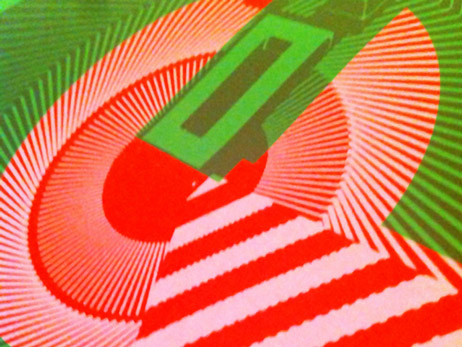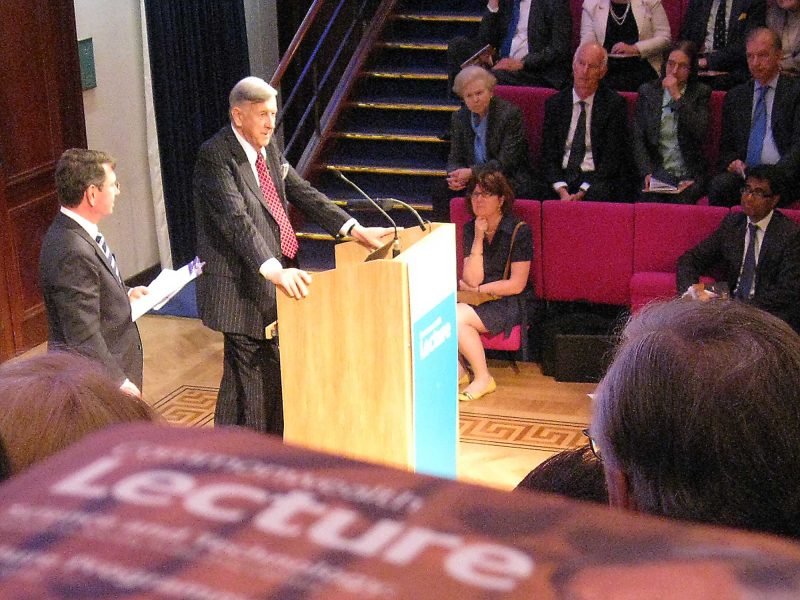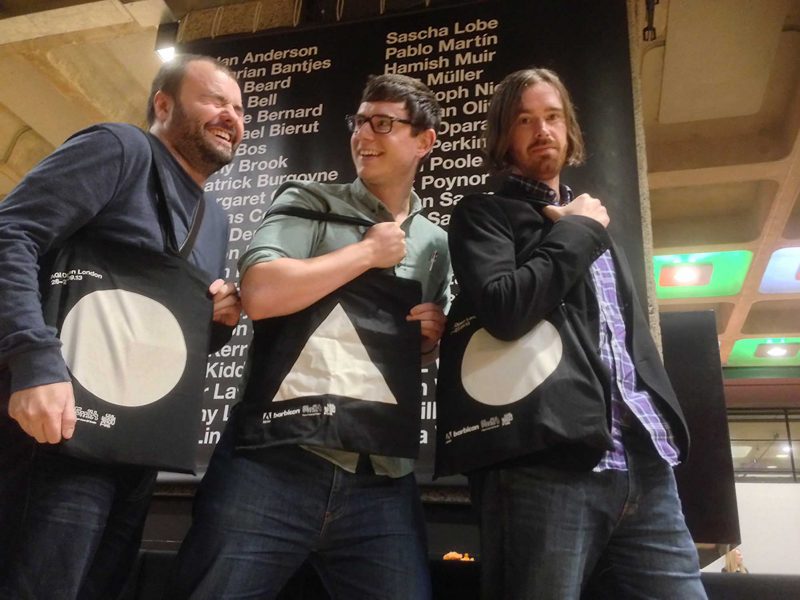The Typographic Circle, a volunteer-led organisation that brings together anyone with an interest in design and typography, host monthly lectures by industry speakers. The final lecture of 2013 fell to Hamish Muir of 8vo fame.
Hamish Muir at Typo Circle

Muir co-founded 8vo with Mark Holt and Simon Johnston in 1985. One year later they began to edit, design and publish the first of eight issues of ‘Octavo’, their highly influential ‘International journal of typography’, until it’s self-destruction in 1992.
… maybe I’m wrong and the nostalgia is all part of the appeal.
In this lecture ‘More madness than manifesto’ Muir aimed to take us from the starting points of the project, given the context of British design in the mid 1980s, through their attempts to balance expectations of the journal’s audience with appropriate form. I was also looking forward to the illustrated journey of hand-rendered mock-ups, as well as a rarely seen reconstruction of the (now obsolete) final issue, which was published as an interactive CD-ROM.
The lecture was indeed rich with images of scalpel-and-tape style mock-ups. Muir also highlighted the ambitions of a project with serious intent (and not merely a marketing tool), and then stated why 8vo, an unknown start-up, thought they could set themselves such a task.
We were informed, in great technical detail, of how the mock-ups related to the finished product and all of the processing required in between; photography; typesetting; reprographics and so on. The audience didn’t respond well and I sensed that there were very few people in the room that fully understood the context. There were interesting bits, but without the background that most of the audience required (many of them under-25), it was hard to fully engage with the material. Muir did attempt to ease the tension by interacting with the audience which, as always, was more difficult than he expected it to be.
I felt that I had just enough background knowledge to make the most of the tales Muir had to tell, but it felt like a struggle – it was very jargon-heavy. I felt like I wanted to know more about the thought behind the process, rather than the process itself – celebrating the ideals and the attitude of 8vo, rather than discussing the merits of using a scalpel rather than ‘doing it all on computer’ like we do today. But maybe I’m wrong and the nostalgia is all part of the appeal.











